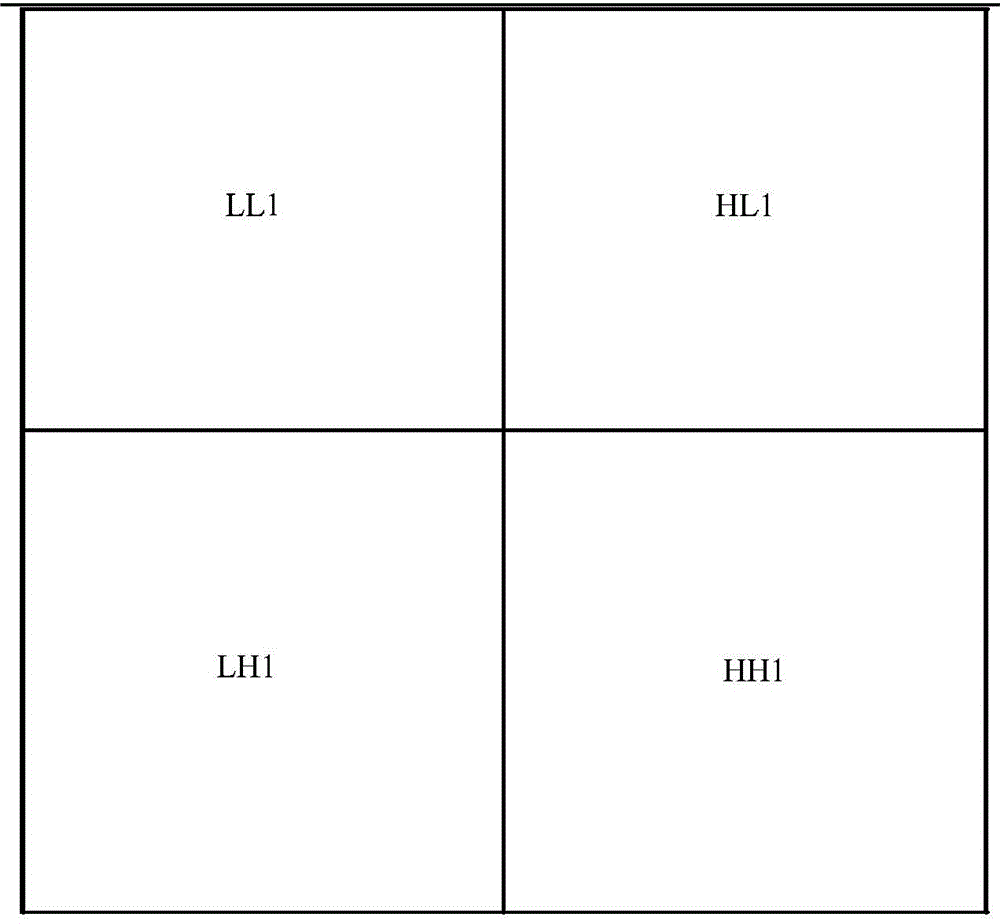Image denoising method and terminal
An image noise reduction and noise reduction technology, applied in the field of image processing, can solve problems such as high algorithm complexity, low efficiency, and small amount of calculation
- Summary
- Abstract
- Description
- Claims
- Application Information
AI Technical Summary
Problems solved by technology
Method used
Image
Examples
Embodiment 1
[0089] Such as figure 1 As shown, in an embodiment of a method for image noise reduction provided by the present invention, the method may include the following steps:
[0090] 101: Obtain image data of an image;
[0091] 102: Perform wavelet decomposition on at least one of the three components of the luminance component y, chrominance components u and v of the image data, to obtain high-frequency wavelet coefficients and low-frequency wavelet coefficients of each component;
[0092] 103: Perform recursive denoising on the low-frequency wavelet coefficients of each component to obtain the denoised low-frequency wavelet coefficients of each component;
[0093]104: Perform wavelet reconstruction according to the high-frequency wavelet coefficient of each component and the low-frequency wavelet coefficient after noise reduction of each component, to obtain at least one component after noise reduction;
[0094] 105: When the at least one component after the noise reduction is t...
Embodiment 2
[0099] With reference to Embodiment 1, in another embodiment of a method for image noise reduction provided by the present invention, as figure 2 As shown, before step 104, it may also include:
[0100] 1031: Perform an attenuation function based on edge information to denoise the high-frequency wavelet coefficients of each component;
[0101] The attenuation function denoising based on edge information for the high-frequency wavelet coefficients of each component includes:
[0102] According to the following formula, the high-frequency wavelet coefficients of each component are denoised,
[0103] y=αx+(1-α)h(x), where α is a parameter related to edge strength and h(x) is a decay function with respect to x.
[0104] In this implementation, the step 104 is specifically 104': performing wavelet reconstruction according to the high-frequency wavelet coefficients of each component after noise reduction and the low-frequency wavelet coefficients of each component after noise red...
Embodiment 3
[0108] With reference to Embodiment 1, in another embodiment of the method for image noise reduction provided by the present invention, the step 102 may include: three luminance components y, chrominance components u and v of the image data At least one of the components is decomposed by n-layer wavelet to obtain n-layer high-frequency wavelet coefficients and n-layer low-frequency wavelet coefficients of each component, where n≥2, n is an integer.
[0109] Each image or photo can have three components of y, u, and v. Denoising the y component of the luminance component can mainly remove the luminance noise existing in the image; denoising the u and v components of the chroma component, It can mainly remove the color noise present in the image. Specifically, which components are denoised may be selected according to the type of noise existing in the image. One or more layers of wavelet decomposition can be performed on at least one of the three components of y, u, and v of th...
PUM
 Login to View More
Login to View More Abstract
Description
Claims
Application Information
 Login to View More
Login to View More - R&D
- Intellectual Property
- Life Sciences
- Materials
- Tech Scout
- Unparalleled Data Quality
- Higher Quality Content
- 60% Fewer Hallucinations
Browse by: Latest US Patents, China's latest patents, Technical Efficacy Thesaurus, Application Domain, Technology Topic, Popular Technical Reports.
© 2025 PatSnap. All rights reserved.Legal|Privacy policy|Modern Slavery Act Transparency Statement|Sitemap|About US| Contact US: help@patsnap.com



